between the layers
Oil and gas have played a key role in society for more than 150 years. They ensure a higher standard of living and unprecedented economic growth. Fossil raw materials are also mined in Germany. The largest natural gas deposits are in Lower Saxony, where around 99% of domestic production is extracted. They currently cover 5 % of Germany‘s total demand.
Extraction is associated with challenges and burdens for the environment. Erosion of the pipes or improper handling allows toxic reservoir water to leak into the environment. The link between our use of fossil fuels and climate change can no longer be denied.
What can the drill sites tell us about themselves?
What is revealed to us when we seemingly recognize nothing?
In my work, I look at the structure and the location of the drilling sites in the landscape. In doing so, I work with two ways of visualizing the place.
In the black and white photographs via the trace of light, in the abstract images of the floor via a physical touch. For this purpose, unexposed slide film was buried next to natural gas extraction sites and later developed after it had been exposed to the ground for several weeks. The film material remained unexposed during the entire process.
This procedure refers to soil and sediment investigations which were carried out at extraction sites in Lower Saxony with the aim of obtaining information on possible environmental hazards from carcinogenic substances such as benzol or mercury and their consequences. In the process, the threshold values in sediments of drainage-relevant surface waters were conspicuously frequently exceeded. Further investigations were then initiated.
The work ‚Between the Layers‘ invites viewers to engage with the complex interplay between beauty and destruction, dependence and autonomy in the context of natural gas extraction.
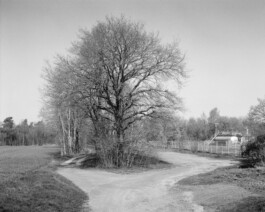



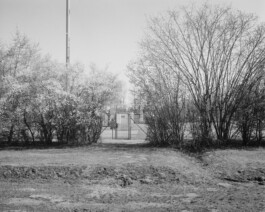






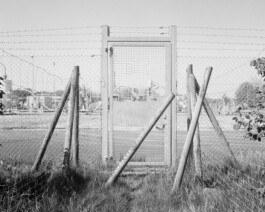
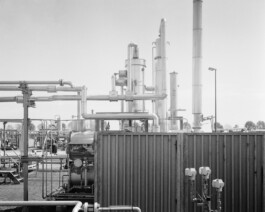
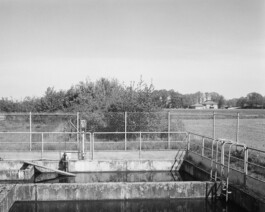
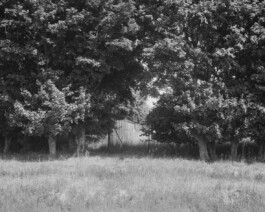

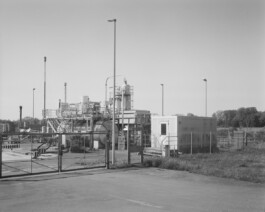
between the layers
Oil and gas have played a key role in society for more than 150 years. They ensure a higher standard of living and unprecedented economic growth. Fossil raw materials are also mined in Germany. The largest natural gas deposits are in Lower Saxony, where around 99% of domestic production is extracted. They currently cover 5 % of Germany‘s total demand.
Extraction is associated with challenges and burdens for the environment. Erosion of the pipes or improper handling allows toxic reservoir water to leak into the environment. The link between our use of fossil fuels and climate change can no longer be denied.
What can the drill sites tell us about themselves?
What is revealed to us when we seemingly recognize nothing?
In my work, I look at the structure and the location of the drilling sites in the landscape. In doing so, I work with two ways of visualizing the place.
In the black and white photographs via the trace of light, in the abstract images of the floor via a physical touch. For this purpose, unexposed slide film was buried next to natural gas extraction sites and later developed after it had been exposed to the ground for several weeks. The film material remained unexposed during the entire process.
This procedure refers to soil and sediment investigations which were carried out at extraction sites in Lower Saxony with the aim of obtaining information on possible environmental hazards from carcinogenic substances such as benzol or mercury and their consequences. In the process, the threshold values in sediments of drainage-relevant surface waters were conspicuously frequently exceeded. Further investigations were then initiated.
The work ‚Between the Layers‘ invites viewers to engage with the complex interplay between beauty and destruction, dependence and autonomy in the context of natural gas extraction.
















